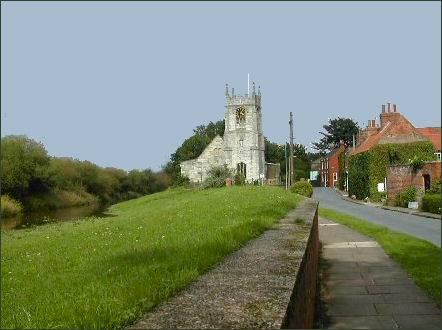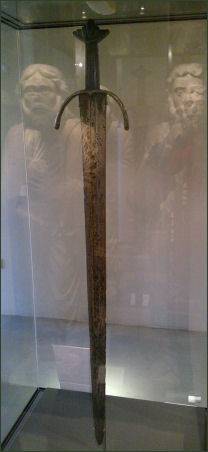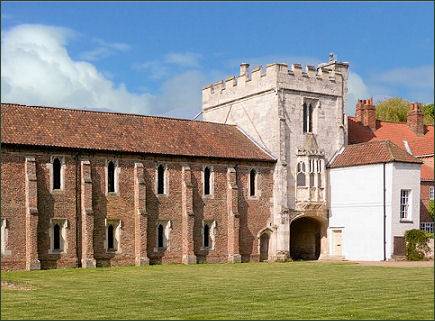Cawood
OS grid reference:- SE 572 377

 The large and historic north Yorkshire village of Cawood has been described as "the Windsor of the North" and was once the residence of the Archbishops of York.
The large and historic north Yorkshire village of Cawood has been described as "the Windsor of the North" and was once the residence of the Archbishops of York.
The name is thought to derive from the raucous caw made by ravens in the nearby woods.The notorious outlaw Dick Turpin is reputed to have forded the River Ouse at Cawood when he escaped to York, which lies ten miles to the north of the village..
Cawood has 3 pubs, the Jolly Sailor which stands on Market Place in the village centre, the Ferry Inn which dates back to the seventeenth century, boasts a large, pleasant river side beer garden and is situated by the swing bridge over the River Ouse and The Castle Inn which stands on Wistowgate and has a restaurant and a large campsite.
The houses and shops are located around the remains of Cawood Castle which lies at the centre of the village. This was once the residence of the Archbishops of York who were forced to leave at the Reformation.
The Cawood Sword (pictured right) was found in the River Ouse near Cawood in the late nineteenth century. It is regarded as "one of the finest Viking swords ever discovered".the sword has been dated to 1100 by comparison to a very similar sword found in Norway which was probably made by the same craftsman. The swords are almost identical except the one in Norway has a Runic inscription on its hilt.The mysterious inscription on the Cawood Sword runs down the blade and is made up of a capital letters which do not form known words. On one side they are in Roman script and on the other they are in Lombardic script. It is the fifth sword of its type ever to be found and by far the best preserved. After being displayed at the Tower of London, it passed into private ownership and was later acquired by the Yorkshire Museum in York in 2007, where it can be seen on display.
Cawood Castle
 The Anglo-Saxon King Athelstan probably built the first fortification at Cawood on the site of the present castle ruins.
The Anglo-Saxon King Athelstan probably built the first fortification at Cawood on the site of the present castle ruins.
By the twelfth century Cawood became an archiespiscopal residence. It was visited by many of England's medieval kings, including Henry lll, Edward l and Edward ll and King John, who hunted game nearby in the thirteenth century.
George Neville was appointed Archbishop of York in 1465 and held a great feast at the castle, which lasted for several days, his brother, Richard Neville, Earl of Warwick, known to history as 'Warwick the Kingmaker' and Richard, Duke of Gloucester, later King Richard III, both attended.
Cardinal Wolsey came to Cawood as Archbishop of York in 1530 and was a popular figure in the village. Before he was installed as Archbishop in York, he was arrested by the Earl of Northumberland on charges of high treason. Wolsey fell ill at Leicester en-route to London and died, which was said to fullfill Mother Shipton's prophecy, that he would see the towers of York Minster but would never be enthroned there.
During the Civil War, the castle was initially held by the Royalists but was taken by the Parliamentarians, however the Earl of Newcastle briefly recaptured it for the Royalists in 1644. Shortly after, however, Lord Fairfax retook the castle again for Parliament. Following the end of the war the castle was abandoned and destroyed, with only the farm buildings and parts of the wall remaining.
The castle is now in the ownership of the Landmark Trust which has restored the gatehouse as a holiday home.
